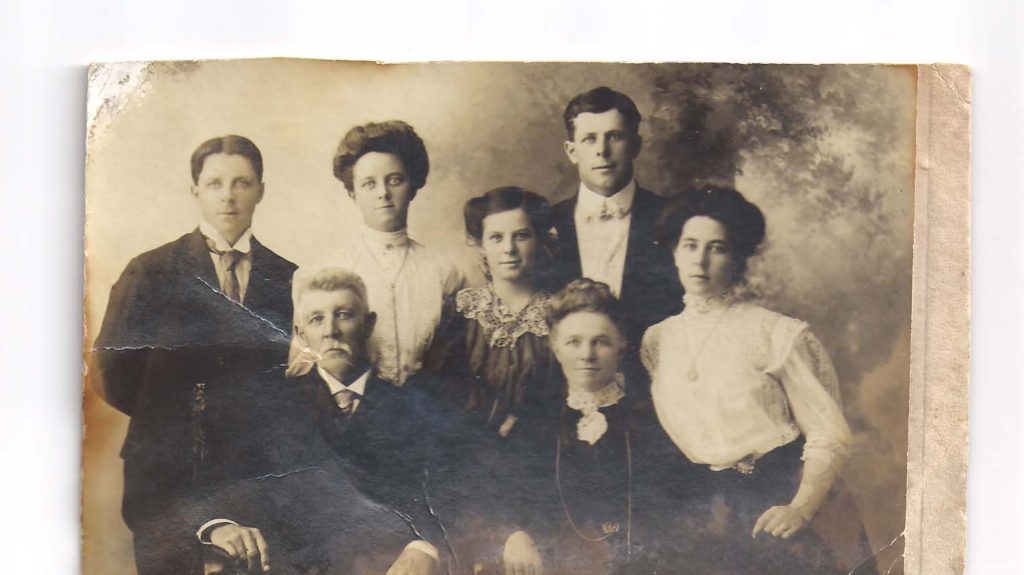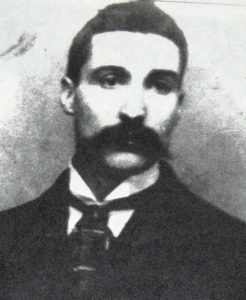
I recently broke through one of my genealogical brick walls and found the Irish townland where my maternal two times great grandmother was born and added more ancestor’s names to my family tree. Using DNA testing, I analyzed family trees of DNA matches. I also used the good, old-fashioned way and contacted a distant cousin who shared his mother’s notes with me.
I am now certain that my two-times great grandmother, Sarah Attridge, who lived many years in San Francisco, was born in the Rossmore, Durrus in West County Cork Ireland in 1854. Durrus is a small village about six miles from the more well-known town of Bantry, County Cork. Sarah had at least six siblings, five sisters and one brother. Most of her sisters immigrated to the United States. Her one brother remained in County Cork.
I’ve always known my father was Irish and having the surname O’Rourke made it rather obvious, but I also had a two-times great grandmother on my maternal side who came from Ireland. I remember my grandmother talking fondly of her grandmother. Sarah raised my grandmother after her mother abandoned the family a few years after my grandmother was born. But when my grandmother was alive, I had no interest in genealogy, so I never bothered to ask her where her grandmother was from. I never asked many questions about her at all. I didn’t even know her name until about ten years ago when I began my genealogical journey.
When I learned her name, I tried to find information using Ancestry.com’s databases and Family Search, but I always came up empty. Unlike my father’s side, my maternal grandmother was Protestant and her family worshiped in the Church of Ireland. I was only used to searching Catholic Parish records. Locating Church of Ireland records was new to me. Another complicating factor was, as I found out later, my maternal Irish ancestors’ records were burned in the 1922 fire that destroyed the Public Records Office in Dublin during the Irish Civil War. My two-times great grandmother’s parish was one of the Church of Ireland parishes that sent their records to Dublin for safekeeping. Ironically, they were destroyed, while most of the Church of Ireland parishes that kept their records survive to this day.

After Sarah immigrated and married my two-times great grandfather Robert Patterson, I was able to find a lot of records. One census record indicated that she came from Northern Ireland, but others indicated only that she was born “Ireland.” I also found the passenger list for the ship Republic, the ship Sarah traveled on to the United States. Sarah arrived in New York Sept. 22, 1873. She was 19 years old. Also on the ship was 21-year-old Eliza Attridge, who I assumed to be Sarah’s older sister.
How I did it
I used Ancestry.com’s DNA match feature and searched for the surname “Attridge.” I had five DNA matches with the name Attridge in their family tree and four of those matches were estimated to be at least fourth cousins. Unfortunately, while all four had family trees, only two of four had public family trees. The other two matches had private trees, meaning I would have to contact them and ask for access.
So I started with one of the matches I could view. She had three Attridge’s in her tree, but no Sarah. So I reached out to my DNA match. Her name is Pat Craig and she lives in England. She did not know much about her Attridge ancestors, but luckily she is very interested in genealogy and set out to help me. Her family tree includes more than 7,000 entries.
Pat told me her family was from Durrus, they were Protestant and she recently found them as well. None of her Attridge ancestor names were familiar to me and all were born in the late 1700s and early 1800s a good 50 years before Sarah was born.















